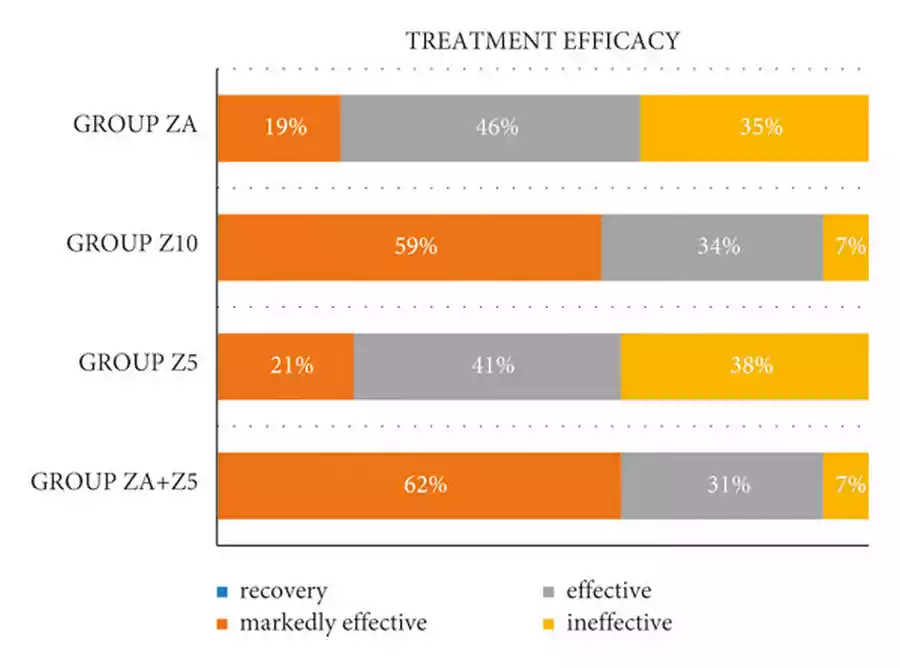
Generic Name: Zolpidem
Brand Names: Various around the world
Drug Class: Nonbenzodiazepine hypnotic
Zolpidem Side Effects, Uses, Dosage, and More
What is Zolpidem?
Zolpidem is a prescription medication used for the short-term treatment of insomnia characterized by difficulties with sleep initiation. It belongs to a class of drugs called nonbenzodiazepine hypnotics, also known as “z-drugs”. Zolpidem works by enhancing the effects of GABA, a neurotransmitter that promotes sleep, in the brain.
This medication is available from various pharmaceutical companies worldwide under different brand names. Zolpidem is typically prescribed for short-term use (usually 7-10 days) in adults who have trouble falling asleep. It may be used intermittently or nightly for insomnia.
Mechanism of action: Zolpidem binds selectively to alpha-1 subunit-containing GABA-A receptors, enhancing GABA effects and promoting sleep.
Chemical structure: Zolpidem is an imidazopyridine compound.
Therapeutic category: Hypnotic and sedative
Anatomical/therapeutic/chemical (ATC) classification
ATC Code: N05CF02 Title: Zolpidem Classification: Nervous system, Psycholeptics, Hypnotics and sedatives, Benzodiazepine related drugs
History of Medicine
Scientists at Synthélabo Recherche, now part of Sanofi, initially synthesised zolpidem in 1978. Approved for medical use in France in 1988 and the United States in 1992, it Designed as a safer substitute for benzodiazepines for treating sleeplessness, zolpidem reduces next-day symptoms and dependency risk.
In this article, we will analyze several key studies on zolpidem, including research on its efficacy and safety profile. We will examine findings from clinical trials as well as case reports of rare side effects. The goal is to provide a comprehensive overview of zolpidem’s uses, benefits, and potential risks based on the latest scientific evidence.
Indications of Zolpidem
Zolpidem is primarily indicated for the short-term treatment of insomnia characterized by difficulty falling asleep. It is typically prescribed for adults experiencing persistent trouble initiating sleep. The medication is intended for short-term use, usually 7-10 days, as prolonged use may lead to tolerance and dependence.
Contraindications and Precautions
Zolpidem is contraindicated in patients with:
- Known hypersensitivity to zolpidem or any components of the formulation
- Severe hepatic impairment
- Sleep apnea syndrome
- Myasthenia gravis
- Acute or severe respiratory depression
Precautions should be taken in patients with:
- History of depression or suicidal thoughts
- History of drug abuse or addiction
- Impaired respiratory function
- Elderly patients (increased risk of falls)
Special Warnings for the Elderly, Children and Pregnant Women
Elderly: Lower doses are recommended due to increased sensitivity to side effects. Falls risk should be carefully assessed.
Children: Safety and efficacy have not been established in pediatric patients. Use is not recommended.
Pregnant women: Limited data available. Use only if potential benefits outweigh risks. May cause respiratory depression in newborns if used late in pregnancy.
Dosage and Administration
The recommended initial dose for adults is 5 mg for women and 5 or 10 mg for men, taken immediately before bedtime. The lowest effective dose should be used. Maximum daily dose should not exceed 10 mg.
What Should I Do If I Miss a Dose?
If a dose is missed, it should be skipped. Taking zolpidem less than 7-8 hours before waking may impair morning alertness. Never double up on doses to make up for a missed one.
Uses of Zolpidem
While primarily used for insomnia treatment, off-label uses may include:
- Treatment of restless legs syndrome
- Adjunct therapy in certain neurological disorders
However, these off-label uses require careful consideration and should only be pursued under close medical supervision.
Overdose
Symptoms of overdose may include:
- Extreme drowsiness
- Confusion
- Slowed breathing
- Coma (in severe cases)
Immediate medical attention is crucial in cases of suspected overdose. Treatment is largely supportive and symptomatic.
Interactions
Drug-Drug Interactions
Zolpidem may interact with:
- Other CNS depressants (e.g., benzodiazepines, opioids)
- CYP3A4 inhibitors (e.g., ketoconazole)
- Rifampin (may decrease zolpidem levels)
As noted by Chahal et al. in their case series on “Zolpidem-induced Brief Psychotic Reactions” (Indian Journal of Psychiatry, 2024), concurrent use of psychotropic medications may increase the risk of atypical side effects.
Drug-Food Interactions
Food can delay the onset of action and potentially reduce the hypnotic effects of zolpidem. The medication should be taken on an empty stomach for optimal effect.
Alcohol consumption should be avoided while taking zolpidem, as it can enhance CNS depression and increase the risk of adverse effects.
Zolpidem Side Effects
While zolpidem is generally well-tolerated, it can produce various side effects. Common side effects include:
- Daytime drowsiness
- Dizziness
- Headache
- Nausea
- Confusion
More concerning side effects, particularly associated with long-term use, have been reported. Moliterno, in the “London Journal of Medical and Health Research” (2024), highlights potential risks of prolonged zolpidem use, including:
- Cognitive impairment
- Increased fall risk, especially in the elderly
- Potential for dependence and withdrawal symptoms upon discontinuation
Weight changes, both gain and loss, have been reported with zolpidem use, though the mechanism is not fully understood.
Rare but Possible Zolpidem Side Effects
Some patients experience rare but potentially serious side effects. Chahal et al., in their case series published in the “Indian Journal of Psychiatry” (2024), describe instances of zolpidem-induced brief psychotic reactions. These atypical side effects include:
- Visual and auditory hallucinations
- Delusional thinking
- Abnormal behavior
- Restlessness
The authors note: “The hallucinations typically occur as singular events. However, instances of additional psychotic reactions resulting from using zolpidem, including delusional thinking, peculiar and unconventional behavior, and restlessness have been documented.”
Other rare side effects may include:
- Complex sleep behaviors (e.g., sleep-walking, sleep-driving)
- Allergic reactions
- Liver function abnormalities
It’s crucial to note that these rare side effects, while concerning, are not common occurrences. However, patients should be aware of their possibility and report any unusual symptoms to their healthcare provider promptly.
How to Manage Zolpidem Side Effects
Managing side effects of zolpidem requires a collaborative approach between patients and healthcare providers. Here are some strategies:
- Dosage adjustment: If side effects are troublesome, your doctor may consider lowering the dose. As Zhu et al. note in their study published in “Evidence-Based Complementary and Alternative Medicine” (2022), “The lowest effective dose should be used.”
- Timing of administration: Take zolpidem immediately before bedtime and ensure you have a full 7-8 hours available for sleep to minimize next-day drowsiness.
- Avoid alcohol and other CNS depressants: These can intensify side effects.
- Regular follow-ups: Maintain regular check-ins with your healthcare provider to monitor for side effects and assess the ongoing need for the medication.
- Gradual discontinuation: If you need to stop taking zolpidem, work with your doctor to taper off gradually to minimize withdrawal effects.
- Alternative treatments: For persistent insomnia, consider non-pharmacological options like cognitive behavioral therapy for insomnia (CBT-I).
- Report unusual symptoms: If you experience any rare side effects like hallucinations or complex sleep behaviors, seek medical attention immediately.
Remember, while side effects can occur, many people take zolpidem without significant issues. The key is to use the medication as prescribed, be aware of potential side effects, and maintain open communication with your healthcare provider.

Additional Important Information of Zolpidem
Resistance Development
Extended zolpidem usage may cause tolerance, which calls for greater dosages to have the same therapeutic impact. This phenomena emphasizes the need of following the advised limited usage. Development of tolerance might raise the likelihood of dependency and withdrawal symptoms after stopping.
Preclinical and Clinical Studies
Preclinical studies have elucidated zolpidem’s mechanism of action, demonstrating its selective binding to α1 subunit-containing GABAA receptors. This selectivity contributes to its hypnotic effects with reduced muscle relaxant and anticonvulsant properties compared to benzodiazepines.
Clinical trials have consistently shown zolpidem’s efficacy in reducing sleep latency and increasing total sleep time. However, as highlighted by Moliterno in the “London Journal of Medical and Health Research” (2024), long-term studies have raised concerns about potential cognitive impairment and increased fall risk, particularly in elderly populations.
Post-authorization Studies and Pharmacovigilance
Rare but major side effects linked to zolpidem usage have been found by post-marketing monitoring. Especially, Chahal et al., in their case series written for the “Indian Journal of Psychiatry” (2024), recorded cases of zolpidem-induced short psychotic episodes. These results highlight how crucial continuous pharmacovigilance is to identifying and reducing uncommon side effects.
Pharmacokinetic Characteristics of Zolpidem
Zolpidem exhibits rapid absorption, with peak plasma concentrations reached within 1.6 hours of oral administration. It undergoes extensive hepatic metabolism, primarily via CYP3A4 enzymes, with a half-life of approximately 2.5-3 hours. This short half-life contributes to its efficacy in sleep initiation with minimal next-day residual effects when used as directed.
Current Research Directions and Future Perspectives
Current research focuses on optimizing zolpidem formulations to enhance its safety profile while maintaining efficacy. Extended-release formulations aim to improve sleep maintenance without increasing next-day impairment. Additionally, investigations into potential applications beyond insomnia, such as in certain neurological disorders, are ongoing.
Future perspectives include the development of more selective GABAA receptor modulators to further minimize side effects. Research into personalized medicine approaches, considering genetic polymorphisms affecting zolpidem metabolism, may lead to more tailored prescribing practices.
Effectiveness
It is indisputable that zolpidem treats short-term insomnia well. For most patients, it greatly lowers sleep latency and increases total sleep duration. But because of tolerance development, its efficacy might decrease with increasing usage.
In their 2022 publication “Evidence-Based Complementary and Alternative Medicine,” Zhu et al. investigated the mix of zolpidem with traditional Chinese medicine, pointing out possible paths for improving efficacy while lowering adverse effects. Their results suggest that such combinations could enable reduced zolpidem dosages while preserving therapeutic effectiveness.
Comparative Efficacy, Systematic Reviews and Meta-analyses
Especially in sleep initiation, systematic reviews and meta-analyses have repeatedly shown zolpidem’s effectiveness in treating insomnia. Particularly with relation to next-day psychomotor impairment, zolpidem usually exhibits equivalent effectiveness when compared to benzodiazepines with a maybe better side effect profile.
Still, these analogies usually center on short-term usage. Comparative research over long terms are few, indicating the intended short-term character of zolpidem treatment. Particularly concerning cognitive impacts and fall risk in senior people, meta-analyses have underlined the necessity of additional solid long-term safety evidence.
Recent studies—especially those by Chahal et al.—emphasize the need of adding infrequent but possibly significant side events into general effectiveness evaluations. Their case series on zolpidem-induced psychotic episodes emphasizes the requirement of alertness and thorough risk-benefit analysis before writing this drug.
In summary, even although zolpidem is still a useful short-term therapy for insomnia, continuous study helps us to better grasp its ideal usage, possible hazards, and chances for therapeutic profile improvement.
Scientific Research
Analysis of the Research Study “The Efficacy and Safety of Zaoren Anshen Capsule in Combination with Zolpidem for Insomnia: A Multicentre, Randomized, Double-Blinded, Placebo-Controlled Trial”
This comprehensive study, conducted by Xiangzhen Zhu, Ming Tao, Haoyu Hu, Jingfang Gao, Jiong Chen, Tiaotiao Lu, Xiaole Wang, Wei Kong, Lijun Lv, and Minjun Wei, offers valuable insights into the potential of combining traditional Chinese medicine (TCM) with conventional Western treatments for insomnia.
Study Design and Methodology
The researchers employed a rigorous randomized, double-blind, multicentre placebo control trial design, involving 131 patients with chronic insomnia. This methodological approach enhances the reliability and validity of the findings. The study’s multicenter nature also increases its generalizability.
Participants were randomly assigned to four treatment groups:
- Zaoren Anshen capsule and 5 mg zolpidem tartrate (ZA + Z5)
- 5 mg zolpidem tartrate and placebo capsule (Z5)
- 10 mg zolpidem tartrate and placebo capsule (Z10)
- Zaoren Anshen capsule and placebo pill (ZA)
The 4-week intervention period, followed by a 2-week follow-up, allows for assessment of both immediate and short-term effects.
Key Findings
The study yielded several significant findings:
- Efficacy: Groups ZA + Z5 and Z10 demonstrated similar treatment efficacy (93%), significantly higher than Groups Z5 and ZA (62% and 65%, respectively).
- Insomnia Severity Index (ISI) Scores: Groups ZA + Z5 and Z10 showed significantly lower ISI scores compared to Groups Z5 and ZA, indicating better treatment response.
- Safety Profile: No significant difference was observed in the incidence of adverse events between the groups, suggesting comparable safety profiles.
Critical Analysis
This study’s strengths lie in its robust design and the novel approach of combining TCM with a conventional hypnotic. The inclusion of multiple treatment groups allows for comprehensive comparisons, providing insights into optimal dosing strategies.
However, several limitations should be noted:
- Short-term Focus: The 4-week intervention period, while standard for many insomnia trials, may not capture long-term efficacy and safety profiles.
- Sample Size: While adequate for detecting primary outcomes, the sample size may limit the power to detect rare adverse events or subgroup differences.
- Generalizability: The study was conducted in China, potentially limiting its applicability to other populations with different genetic backgrounds or cultural perspectives on TCM.
Implications and Future Directions
This research opens new avenues for integrating TCM with conventional insomnia treatments. The comparable efficacy of the combination therapy (ZA + Z5) to the higher dose zolpidem (Z10), with potentially fewer side effects, is particularly promising.
Future research could benefit from:
- Longer-term follow-up studies to assess sustained efficacy and safety.
- Exploration of the mechanisms underlying the synergistic effects of Zaoren Anshen capsule and zolpidem.
- Investigation of potential interactions between TCM and other sleep medications.
Conclusion
The research by Zhu et al. offers important data confirming the possibility of treating insomnia with Zaoren Anshen pill with zolpidem. The results imply that this combination could have improved therapeutic effectiveness and perhaps reduce the hazards related to greater zolpidem alone dosage.
This study adds much to the already growing amount of data on integrated methods of treating insomnia. It emphasizes the possible worth of investigating conventional medical approaches in concert with contemporary pharmaceutical remedies, thus generating maybe customized and successful therapeutic plans for insomnia sufferers.
Briefly
Zolpidem is a nonbenzodiazepine hypnotic medication primarily used for the short-term treatment of insomnia. It works by boosting the actions of GABA in the brain, therefore encouraging sleep onset. Although zolpidem side effects are usually mild, they might include daytime sleepiness, dizziness, and seldom complicated sleep habits. Usually just 7–10 days are used as reliance and tolerance might cause problems. Combining zolpidem with traditional Chinese medicine has been investigated recently to possibly improve effectiveness while lowering side effects.
enofmedicines.com
ATTENTION: It is crucial never to take medication without a qualified doctor’s supervision. Always read the Patient Information Leaflet (PIL) with each prescribed medicine. Pharmaceutical companies accurately describe each product’s details, which may be regularly updated, though variations may exist depending on the drug’s composition. This article analyses the active ingredient/s rather than specific brand names containing this generic medicine. Study the instruction leaflet for each preparation you use. Close cooperation with your doctor and pharmacist is vital. Self-administering medication carries serious health risks and must be strictly avoided.
Bibliography
- Chahal, S., A. Karahda, N. Govil, and S. Jain. “Zolpidem-induced Brief Psychotic Reactions: A Case Series.” Indian Journal of Psychiatry, 2024, journals.sagepub.com
- Moliterno, A. “Zolpidem in Insomnia Management: Considerations and Side Effects Associated with Long-Term Indiscriminate use.” London Journal of Medical and Health Research, 2024, journalspress.uk
- Zhu, X., M. Tao, H. Hu, J. Gao, J. Chen, T. Lu, X. Wang, W. Kong, L. Lv, and M. Wei. “The Efficacy and Safety of Zaoren Anshen Capsule in Combination with Zolpidem for Insomnia: A Multicentre, Randomized, Double‐Blinded, Placebo‐Controlled Trial.” Evidence‐Based Complementary and Alternative Medicine, 2022, onlinelibrary.wiley.com
FAQ
What are the potential zolpidem side effects from long-term use?
Long-term zolpidem use may lead to tolerance, dependence, and withdrawal symptoms upon discontinuation. Cognitive impairment and increased fall risk, especially in the elderly, have been reported. Consult your doctor about the risks and benefits of extended use, as it's typically recommended for short-term treatment only.
Can zolpidem side effects include weight gain or weight loss?
Some users report weight changes with zolpidem use, though the mechanism isn't fully understood. Weight gain or loss may be indirect effects of improved sleep or changes in eating habits. If you notice significant weight changes while taking zolpidem, discuss this with your healthcare provider to rule out other causes.
What are common zolpidem side effects the next day?
Next-day effects may include drowsiness, dizziness, and impaired coordination or concentration. These are more likely if you take the medication less than 7-8 hours before waking. To minimize these effects, take zolpidem immediately before bedtime and ensure you have enough time for a full night's sleep.
Are there any zolpidem side effects on kidney function?
While zolpidem is primarily metabolized by the liver, some studies suggest potential impacts on kidney function, especially with long-term use. Patients with existing kidney issues should be closely monitored. Always inform your doctor about any kidney concerns before starting zolpidem treatment.
Can zolpidem side effects include hallucinations?
Rare cases of hallucinations have been reported with zolpidem use, particularly visual hallucinations. These are more likely at higher doses or in elderly patients. If you experience any unusual perceptions or behaviors while taking zolpidem, seek immediate medical attention and inform your healthcare provider.
What are the potential zolpidem side effects when combined with alcohol?
Combining zolpidem with alcohol can dangerously enhance sedative effects, leading to severe drowsiness, impaired coordination, and potentially life-threatening respiratory depression. It may also increase the risk of complex sleep behaviors. Never mix zolpidem with alcohol, and consult your doctor about safe use.
What are typical 10mg zolpidem side effects compared to lower doses?
Higher doses of zolpidem, such as 10mg, may increase the likelihood and intensity of side effects like daytime drowsiness, dizziness, and confusion. The risk of complex sleep behaviors and next-day impairment may also be higher. Always start with the lowest effective dose as prescribed by your doctor.



